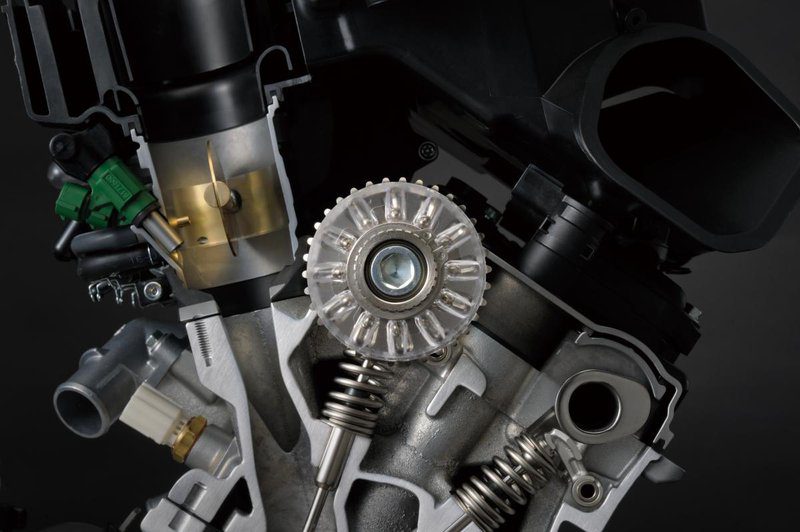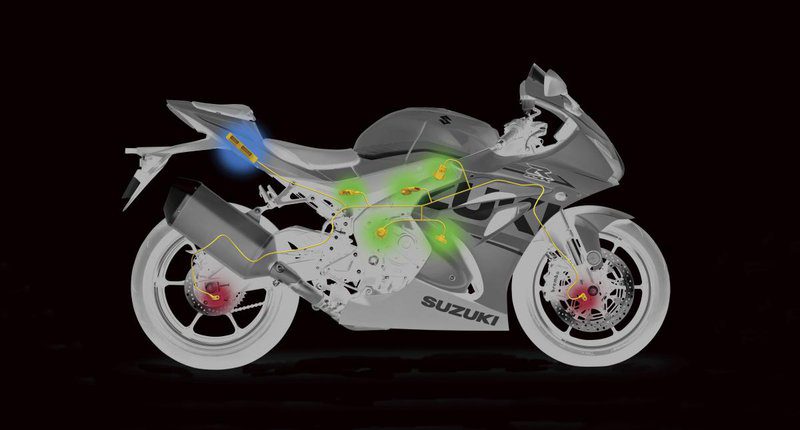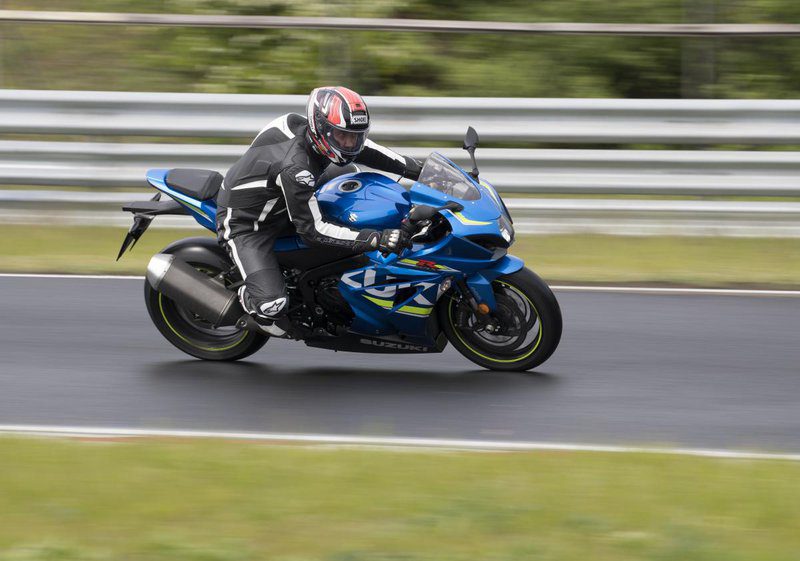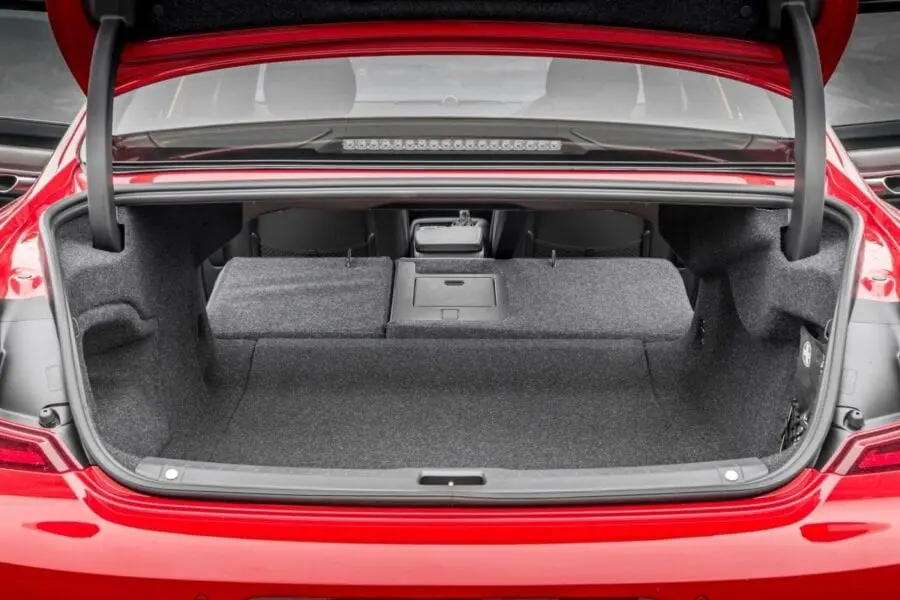
Traveled: Suzuki GSX-R 1000
It's a must today, a standard in the prestigious liter sportbike class, and to be honest, Suzuki really got into the 200+ club belatedly. The refurbishment was meticulous, and the 1000 GSX-R 2017 stacked up from the smallest propeller onwards. It is Suzuki's most powerful, lightest, most efficient and most advanced sport model to date. Thanks to new environmental standards, of course, also the cleanest. The fact that they were able to combine it all into this final product is actually a great engineering and technological achievement. Suzuki also proudly talk about it and also mention how they helped each other with ideas from MotoGP competitions. One of the most interesting components is the double cam cylinder head, which is hollow to save weight. Even more unique is the lightweight and simple system of steel balls that, at higher speeds, move outward due to centrifugal force towards the circumference of a gear mounted on the camshaft that controls the intake valves. All this is just for the sake of a more linear power delivery and better use of it. The valves are made of durable and very light titanium. The intake manifold is 1,5 millimeters larger and the exhaust manifold is 1 millimeter smaller. Because the valves are about half as light, the engine spins faster at maximum RPM. Although it has great maximum power, which is 149 kilowatts or 202 "horsepower" at 13.200 rpm, this does not come at the expense of power in the lower and middle rev range. It's even better to ride than the old engine, the new four-cylinder works like a doped cyclist on the Tour.

My first contact with the GSX-R 1000 was not ideal as we drove the first lap after the slightly wet Hungaroring and I rode very carefully in the rainy program. After the track was dry, I happily ate the fruits of the labor of diligent Japanese engineers and squeezed the throttle lever to full. It never runs out of power, and even the cognitive laps in third and fourth gears along the winding sections of the track and between these shorter planes do not travel very slowly, as the engine is extremely flexible. I can easily imagine that off-road driving will be very undemanding. On the highway, where he drives along the border all the time, all this helps me to get maximum pleasure, but above all at a safe pace, and get adrenaline ecstasy. A few years ago, in such a situation, when wet spots are clearly visible on the asphalt and only a dry ideal track, I would not have dared to open the gas like that even in a dream. Now the electronics are watching me. Continental's electronics, based on a trio system measuring various parameters in six directions, work flawlessly. The sensors for rear wheel speed, acceleration, throttle position, current gear shaft position and a front wheel speed sensor tell the computer and the inertia unit in milliseconds what is happening to the motorcycle and what is happening under the wheels. On the track, this can be seen by gently rounding a corner on wet asphalt and straightening a little while opening the throttle all the way (we rode the excellent Bridgestone Batlax RS10 tires, which are the first setup but still don't have rain grip). A motorcycle without electronic assistance would, of course, instantly collapse to the ground, and here you are reminded of the border by the soft rear end and the flashing yellow indicator light on the gauges. The perfect proof of what the electronics are capable of was the sudden and decisive acceleration as I drove from wet asphalt onto dry track. The engine then transfers all the power to the asphalt, resulting in tremendous acceleration. In a word: wonderful! With a simple push of a switch on the steering wheel, you can select one of three power modes while driving, while there is always the maximum power available, which can be controlled with ten levels of rear wheel slip control.

I can also praise the driving position and ergonomics in general. I am 180 cm tall and to me the GSX-R 1000 looked like a cast. Of course, you lean your whole body forward, but not so much that you tire out on a longer trip. For some reason, I cannot shake the thought that this bike is suitable for teams participating in endurance racing. Aerodynamics at the highest level. However, I noticed that the brakes were a little tired at the end of each of the 20-minute runs on the track, and to achieve the same effective braking, I had to push the lever even more. Even today, however, I am angry with myself because I did not and could not muster the courage to pull a little more open throttle at the end of the finish line and hit the braking point in black. It's like throwing off the throttle at around 250 kilometers per hour, hovering like a monkey on both brake levers and setting up a "heroic chest" to stop air drag in addition to Brembo brakes. Each time the braking was so strong that I still had some distance to the first turn, leading down the slope to the right. So the brakes still amazed me with their power over and over again. Moreover, the racing ABS was never engaged on a dry track.

However, I was missing (and very much) the full power shift assistant (quickshifter) that comes standard on the even sportier limited GSX-R 1000R. The transmission worked flawlessly, reliably and accurately, but the clutch had to be squeezed out when shifting.
I also have to compliment the suspension performance, which is of course fully adjustable and with a good aluminum frame keeps the wheels calm and in line.
After the test day is over and I'm pleasantly tired, I can only reach out to the team behind the new GSX-R 1000 and congratulate them on a job well done.
text: Petr Kavčič · photo: MS, Suzuki
